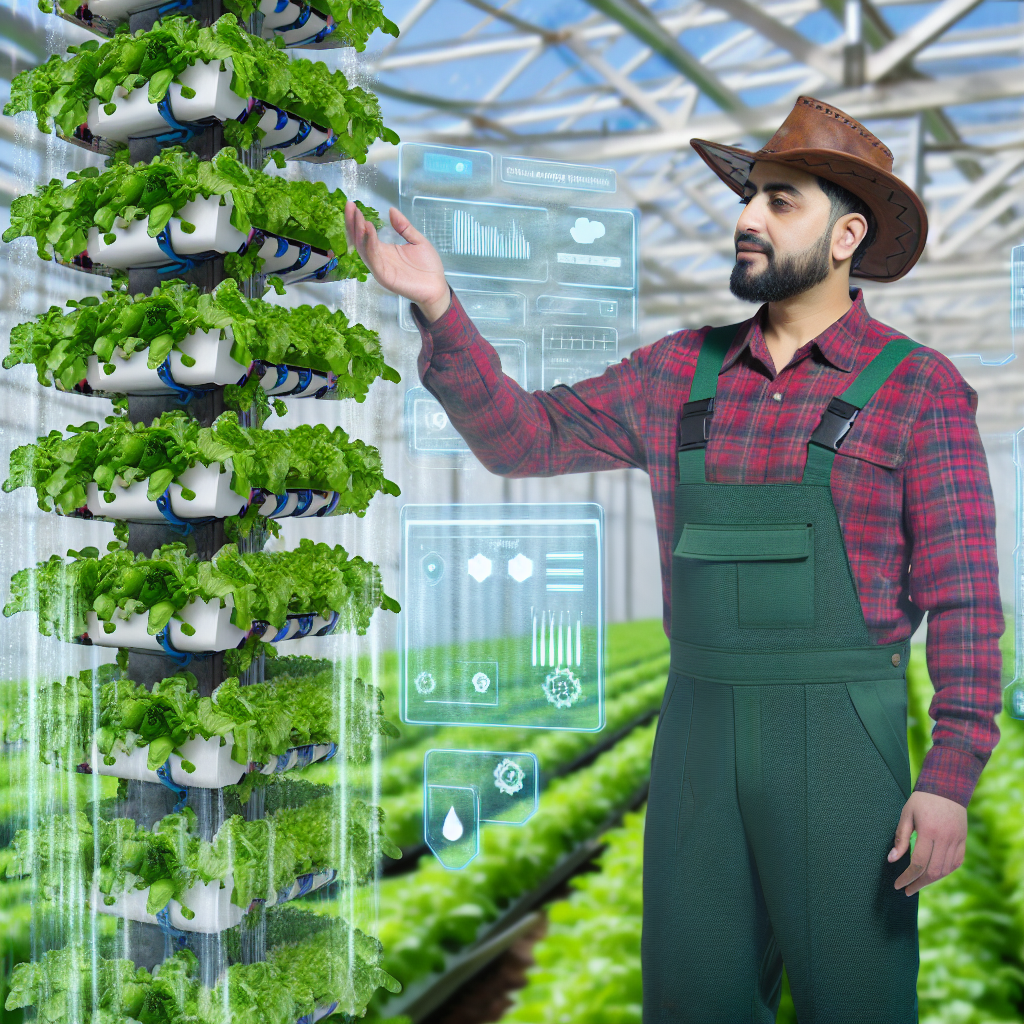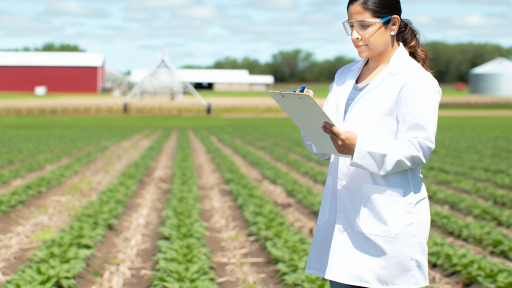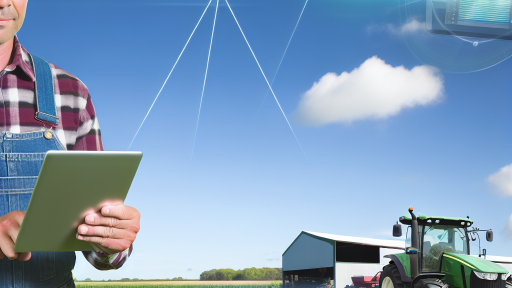Introduction to Vertical Farming and its Impact on Agriculture
Vertical farming transforms traditional agricultural practices.
It utilizes vertically stacked layers to grow crops efficiently.
This innovative method aims to maximize space and resources.
Consequently, it addresses growing urbanization and food demand.
Farmers can cultivate healthy produce without extensive land use.
Moreover, vertical farming minimizes transportation distances.
This reduces carbon footprints associated with food distribution.
Importantly, vertical farms often use hydroponics or aeroponics.
These soilless systems utilize significantly less water than conventional farming.
As a result, they contribute to sustainable water use practices.
Vertical farms can be established in urban areas, closer to consumers.
This proximity ensures fresh produce reaches markets rapidly.
Thus, it meets the increasing demand for organic and local foods.
Importantly, vertical farming offers year-round crop production.
This capability leads to increased yield per square foot.
Transform Your Agribusiness
Unlock your farm's potential with expert advice tailored to your needs. Get actionable steps that drive real results.
Get StartedAdditionally, controlled environments reduce pest-related issues.
Farmers can optimize conditions for plant growth effectively.
Consequently, they reduce the need for pesticides and herbicides.
Furthermore, vertical farms enhance food security in cities.
This provides a reliable supply of fresh produce to urban populations.
Finally, vertical farming embodies a shift towards sustainable agriculture.
Investing in this technology could reshape future food systems.
Essential Components of Vertical Farming Equipment
Growth Systems
Growth systems form the backbone of vertical farming setups.
They include hydroponics, aeroponics, and aquaponics technologies.
Hydroponics involves growing plants in a nutrient-rich water solution.
Aeroponics uses mist to deliver nutrients directly to plant roots.
Aquaponics combines fish farming with plant cultivation symbiotically.
Lighting Solutions
Proper lighting is crucial for plant growth in vertical farming.
LED grow lights are the most efficient option available.
They provide the necessary light spectrum for photosynthesis.
Additionally, they consume less energy than traditional lights.
Positioning lights correctly can enhance plant growth further.
Climate Control Systems
Climate control systems help maintain optimal growing conditions.
Temperature, humidity, and airflow must all be managed carefully.
Automated systems can monitor and adjust these factors dynamically.
Fans and vents regulate airflow throughout the growing environment.
Irrigation Systems
Irrigation systems deliver water consistently to plants.
Drip systems are popular for their efficiency and precision.
Scheduling watering routines helps prevent over or under-watering.
Showcase Your Farming Business
Publish your professional farming services profile on our blog for a one-time fee of $200 and reach a dedicated audience of farmers and agribusiness owners.
Publish Your ProfileRecycling water through closed systems can save resources.
Crop Management Software
Crop management software aids in tracking plant growth and health.
It helps farmers monitor nutrient levels and environmental conditions.
Data analytics can optimize farming operations and yield results.
Integrating sensors can provide real-time information for adjustments.
Nutrient Delivery Systems
Nutrient delivery systems ensure plants receive essential minerals.
Automated systems can mix and deliver nutrients based on needs.
The right balance of nutrients is vital for robust plant growth.
Monitoring nutrient levels prevents deficiencies and oversaturation.
Structural Components
Structural components support vertical farming arrangements.
Growing racks and shelves maximize space utilization effectively.
Materials must be durable and resistant to moisture and pests.
Modular designs allow for flexibility and customization in setups.
Security Measures
Security measures protect both crops and equipment from harm.
Surveillance cameras can monitor facilities for trespassers.
Access control systems ensure only authorized personnel can enter.
Regular maintenance checks help identify potential vulnerabilities.
Types of Growing Systems
Hydroponics
Hydroponics involves growing plants without soil.
This method uses nutrient-rich water to nourish the plants.
It provides continuous access to essential nutrients.
Hydroponic systems can be more space-efficient than traditional farming.
Common hydroponic setups include nutrient film technique and deep water culture.
These systems promote faster plant growth and higher yields.
Aeroponics
Aeroponics is another innovative growing system.
This method suspends plants in the air and mists their roots with nutrients.
Aeroponic systems maximize oxygen exposure, leading to rapid growth.
They require fewer resources compared to traditional methods.
Additionally, aeroponics often results in less risk of disease.
Vertical Farming Systems
Vertical farming integrates multiple layers of crops in a controlled environment.
This method saves space and increases productivity significantly.
These farms can be found in urban areas, utilizing buildings for agriculture.
They often use LED lighting and climate control systems.
This approach optimizes plant growth while minimizing land use.
Choosing the Right System
Selecting the appropriate growing system is crucial for success.
Consider factors such as available space, budget, and crop type.
Hydroponics may be ideal for leafy greens, while aeroponics suits herbs well.
Assess your resources to determine the best fit for your needs.
Delve into the Subject: Choosing the Right Sensors for Your Crops
Lighting Solutions: LED vs. Traditional Grow Lights
Introduction to Grow Lights
Lighting plays a crucial role in vertical farming.
It directly affects plant growth and productivity.
Showcase Your Farming Business
Publish your professional farming services profile on our blog for a one-time fee of $200 and reach a dedicated audience of farmers and agribusiness owners.
Publish Your ProfileChoosing the right type of light is essential for success.
LED Grow Lights
LED lights are increasingly popular in modern agriculture.
They are energy-efficient and have a long lifespan.
LEDs emit specific wavelengths, benefiting plant photosynthesis.
This technology lowers energy costs by up to 70%.
Additionally, LED lights produce less heat.
This feature reduces cooling requirements in a controlled environment.
Traditional Grow Lights
Traditional grow lights include incandescent and fluorescent options.
These lights are often less efficient than LED alternatives.
They consume more energy and generate more heat.
Consequently, growers might face higher operational costs.
However, some growers prefer traditional lights for specific crops.
Key Differences between LED and Traditional Grow Lights
- Energy Consumption: LEDs use significantly less energy.
- Heat Generation: LEDs produce less heat than traditional lights.
- Longevity: LED lights last longer than their traditional counterparts.
- Light Spectrum: LEDs can be customized for optimal plant growth.
Factors to Consider When Choosing Lighting
Understanding your specific plants’ needs is crucial.
Consider the growing space and budget as well.
Evaluate the light intensity required for different plant stages.
Finally, think about long-term maintenance and replacement costs.
Explore Further: Automated Machinery in Precision Agriculture
Climate Control Systems: Importance of Temperature and Humidity Regulation
Understanding the Role of Climate Control
Climate control systems play a crucial role in vertical farming.
They ensure optimal growing conditions for plants.
Temperature and humidity directly impact plant growth.
Moreover, these factors influence pest management and disease resistance.
Temperature Regulation in Vertical Farming
Temperature affects the metabolic rate of plants.
Maintaining consistent temperatures promotes healthy growth.
Typical temperature ranges vary by plant species.
For most crops, 70 to 75 degrees Fahrenheit is ideal.
Utilizing heating and cooling systems helps in achieving stability.
Humidity Control Practices
Humidity levels also significantly impact plant health.
High humidity can lead to mold and mildew growth.
Conversely, low humidity may cause plants to desiccate.
Generally, a humidity range of 40 to 60 percent works well.
Dehumidifiers and humidifiers can help maintain these levels.
Integration of Climate Control Technology
Advanced technology assists in controlling climate systems.
Automated systems monitor and adjust environmental conditions.
Data collected allows for precise interventions.
Smart sensors play a vital role in regulating temperature and humidity.
Internet of Things (IoT) devices enhance farming efficiency.
Energy Efficiency and Sustainability
Energy efficient climate control systems reduce overall costs.
Sustainable practices contribute to environmental conservation.
Using renewable energy sources further enhances sustainability.
Investing in high-quality systems pays off in the long run.
Showcase Your Farming Business
Publish your professional farming services profile on our blog for a one-time fee of $200 and reach a dedicated audience of farmers and agribusiness owners.
Publish Your ProfileUltimately, effective climate control leads to better yields.
Discover More: Benefits of Sensor Technology for Modern Farmers
Nutrient Delivery Systems: Feeding Plants Efficiently
Importance of Nutrient Delivery Systems
Nutrient delivery systems play a crucial role in vertical farming.
They ensure plants receive essential nutrients directly to their roots.
This method promotes faster growth and healthier crops.
Additionally, it optimizes resource usage, reducing waste.
Types of Nutrient Delivery Systems
Various nutrient delivery systems are available for vertical farms.
Hydroponics is one popular method involving water-based nutrient solutions.
In this system, plants grow without soil, relying solely on nutrients in water.
Aeroponics is another innovative method that uses mist to provide nutrients.
It allows for maximum oxygen exposure while minimizing water usage.
Furthermore, aquaponics combines fish farming with plant cultivation.
This sustainable system recycles nutrients from fish waste for plant growth.
Key Components of Nutrient Delivery Systems
Understanding key components is essential for effective nutrient delivery.
- Pumps circulate nutrient solutions through the system.
- Reservoirs store nutrient mixtures until needed.
- Drip lines deliver nutrients directly to plant roots.
- Timers regulate the flow of nutrient solutions.
Maintaining Nutrient Delivery Systems
Regular maintenance is vital for nutrient delivery systems.
Check for clogs in pipes or drip lines regularly.
Monitor nutrient levels in the reservoir to ensure effectiveness.
Moreover, adjust pH levels to optimize nutrient absorption by plants.
By maintaining these systems, farmers enhance plant health and yield.
Discover More: Sustainable Farming Practices Backed by Data

Automation Technology: Enhancing Efficiency with Smart Farming Tools
The Role of Automation in Vertical Farming
Automation plays a crucial role in vertical farming systems.
It streamlines operations and increases productivity levels.
Moreover, it allows for precise control over farming conditions.
Types of Automation Technologies
Several types of automation technologies exist in vertical farming.
These include climate control systems and nutrient management tools.
Additionally, automated planting and harvesting systems improve efficiency.
Climate Control Systems
Climate control systems maintain optimal growing conditions.
They regulate temperature, humidity, and air circulation.
As a result, plants grow healthier and yield better results.
Nutrient Management Tools
Nutrient management tools ensure plants receive essential nutrients.
They monitor nutrient levels and adjust delivery as needed.
This precisely tailored feeding promotes rapid growth.
Benefits of Smart Farming Tools
Smart farming tools enhance operational efficiency significantly.
They reduce labor costs through automation of tasks.
Furthermore, they improve crop quality and production consistency.
Data-Driven Decision Making
Data analytics provides insights that drive better farming decisions.
Farmers can track performance metrics in real-time.
Consequently, they optimize resource use and reduce waste.
Popular Automation Equipment
Various automation devices are popular among vertical farmers.
Examples include robotic planters and automated watering systems.
Showcase Your Farming Business
Publish your professional farming services profile on our blog for a one-time fee of $200 and reach a dedicated audience of farmers and agribusiness owners.
Publish Your ProfileAdditionally, drones for monitoring crop health are becoming widespread.
Robotic Planters
Robotic planters simplify the planting process.
They ensure uniform planting depths and spacing.
This consistency enhances overall crop potential.
Automated Watering Systems
Automated watering systems use sensors to manage irrigation.
They provide water only when needed, conserving resources.
This targeted approach promotes healthier plants and saves time.
Future Trends in Automation Technology
The future of automation in vertical farming looks promising.
Innovations in AI and machine learning will continue to evolve.
These advancements will lead to even higher efficiency levels.
As technology progresses, vertical farmers will gain more tools.
Ultimately, they can better meet global food demands sustainably.
Water Management Systems: Recycling and Efficient Usage
Importance of Water Management
Efficient water management is crucial in vertical farming.
It minimizes waste while maximizing crop yield.
Moreover, it plays a vital role in sustainable agriculture.
Types of Water Management Systems
Several systems enhance water recycling and usage efficiency.
Hydroponic systems allow plants to grow without soil while using less water.
Aeroponic systems deliver water in mist form, promoting oxygen absorption.
Nutrient Film Technique (NFT) recirculates water for optimal nutrient delivery.
Benefits of Recycling Water
Recycling water reduces overall consumption significantly.
This practice lowers operational costs for farmers.
Furthermore, it reduces the environmental footprint of farming.
Implementing Efficient Usage Techniques
Farmers can implement several strategies for better water management.
- Use moisture sensors to monitor soil and plant water needs.
- Implement drip irrigation systems to minimize evaporation.
- Utilize rainwater harvesting systems to collect natural precipitation.
Each technique can greatly improve water efficiency.
Monitoring and Maintenance
Regular monitoring ensures systems operate effectively.
Farmers should conduct frequent checks on water levels and quality.
Furthermore, maintaining equipment prevents leaks and malfunctions.
Case Studies in Efficiency
Many farms have successfully implemented efficient water management.
GreenTech Farms in California reduced water usage by 30%.
Similarly, UrbanGrowers in New York increased crop yield through hydroponics.
These examples highlight the effectiveness of proper water management systems.
Safety and Maintenance Considerations for Vertical Farming Equipment
Importance of Regular Maintenance
Regular maintenance ensures the longevity of vertical farming equipment.
It helps prevent unexpected breakdowns and costly repairs.
Additionally, it maintains optimal growing conditions for plants.
Proper maintenance reduces the risk of accidents in farming setups.
Scheduled Inspections
Implement a routine inspection schedule for all equipment.
Check components like lighting systems, hydroponic pumps, and fans.
Identify wear and tear early to avoid significant issues later.
Document inspection findings to track equipment performance.
Safety Protocols
Establish clear safety policies for using farming equipment.
Showcase Your Farming Business
Publish your professional farming services profile on our blog for a one-time fee of $200 and reach a dedicated audience of farmers and agribusiness owners.
Publish Your ProfileTrain all staff members in safe operating procedures.
Use personal protective equipment when working with machinery.
Ensure emergency exits and safety equipment are clearly marked.
Cleaning Procedures
Regularly clean all equipment to prevent contamination.
Use appropriate cleaning agents that are safe for plants.
Focus on maintaining sterile environments in vertical systems.
Implement detailed cleaning schedules for different equipment types.
Environmental Controls
Maintain optimal environmental conditions within your farm.
Regularly monitor temperature, humidity, and light levels.
Calibrate sensors and controllers to ensure accurate readings.
Adjust systems promptly to respond to environmental changes.
Training and Education
Provide ongoing training for staff on equipment handling.
Use hands-on demonstrations to reinforce safety practices.
Share the latest advancements in vertical farming technology.
Encourage open discussions on safety concerns and suggestions.
Future Trends in Vertical Farming Equipment and Innovation
Technological Advancements
New technologies are revolutionizing vertical farming equipment.
IoT sensors automate monitoring plant health and environmental conditions.
These sensors provide real-time data for better crop management.
Additionally, AI algorithms optimize resource usage, reducing waste.
Sustainable Practices
Sustainability is becoming a priority in vertical farming.
Hydroponics and aquaponics systems use less water than traditional methods.
Organic farming practices are also being integrated into vertical systems.
These changes fulfill consumer demand for eco-friendly products.
Modular Systems
Modular farming systems are gaining popularity.
They offer flexibility in the size and scale of operations.
This adaptability appeals to a wider range of urban farmers.
Moreover, they can be easily expanded as demand grows.
Automation and Robotics
Automation is streamlining operations in vertical farms.
Robotic systems handle planting, watering, and harvesting tasks.
Such advancements minimize labor costs and human error.
In addition, they enhance overall efficiency and productivity.
Integration with Smart Cities
Vertical farming is increasingly integrated into urban environments.
Collaboration with smart city initiatives fosters innovation.
This integration promotes local food supply chains and reduces transportation costs.
Therefore, communities benefit from fresher produce.
Research and Development
Continuous research drives advancements in vertical farming technologies.
Universities and corporations are partnering on innovative projects.
These endeavors lead to new techniques and equipment for improved yields.
Ultimately, they position vertical farming as a vital solution for food security.
Additional Resources
A review on urban agriculture: technology, socio-economy, and policy
Showcase Your Farming Business
Publish your professional farming services profile on our blog for a one-time fee of $200 and reach a dedicated audience of farmers and agribusiness owners.
Publish Your ProfileVertical Farming – ATTRA – Sustainable Agriculture




